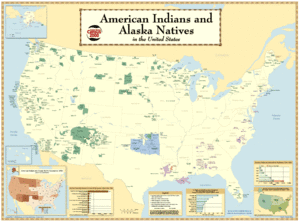For those of you who have been regular visitors to our website I am sure you noticed a huge drop off in blog the last month or so.
The reason for that decline in blogs is the Tribal Leaders Institute project (TLI) has come to an end as of August 31, 2010. And we were spending the majority of my time wrapping up the project and writing the Final Technical Report and Commercialization Plan which we submitted to USDA today.
There was a huge drop off in the number of people who visited our site when we quit writing blogs. We went from approximately 1630 (April) visitors per day to approximate 1380 (June).
At our peak our website average 50,000 hit per month.
There are a lot of tribal member visiting our site, which bodes well for the commercialization phase of TLI, which I will talk about later on in this blog.
We completed five courses:

- Introduction to Ethical Issues on Indian Reservations,
- Courageous and Ethical Managers,
- Courageous and Ethical Tribal Boards
- Becoming a Responsible Worker and
- Courageous And Ethical Decision Making For Tribal Leaders.
Commercialization Plan
Spirit Lake Consulting, Inc. has developed the commercialization plan for the Tribal Leaders Institute to take the knowledge gained so far, the training modules developed and the feedback from our testing and turn this into a modest but profitable enterprise. While for-profit colleges and technical schools have made billions in the past decade, this has come at an ethical cost. The graduation rate of for-profit schools is less than half that of public or private non-profit institutions (NCES,2010) with numerous reports of federal judgments and investigations directly related to the push for rapid growth in enrollment (Fain,2010; Inside Higher Ed, 2010).
In contrast, SLC experience to date supports a growth strategy that is more organic than viral as offering a sustainable enterprise within the target market. This knowledge of the market is a significant strength.
There are over four million Native Americans in the United States, and over 1.4 million living on reservations (U.S. Department of Commerce, 2006). SLC is located centrally within this target market.
While the market may appear small, tribal nations in the Great Plains region each represent several hundred million dollars in expenditures. Each reservation has many organizations that collectively generate millions of dollars.The Tribal Leadership Institute located on Spirit Lake Nation which itself is centrally located. Over 30 reservations are within one-day driving distance.In Montana, North Dakota, South Dakota, and Minnesota, there are 34 American Indian Reservations.
In North Dakota, there are 11 American Indian Head Start programs.
In North Dakota, South Dakota, Montana, Minnesota, and Nebraska, there are 45 American Indian Head Start programs.
In Montana, North Dakota, South Dakota, and Minnesota, there are 30 casinos.
There are also K-12 schools, tribal colleges, industries, and outside organizations that are based on the reservation or hire tribal members

Image via Wikipedia
.
All these entities experience problems with workers not showing up for work, quitting after the first paycheck, poor workmanship, and other problems addressed by the Tribal Leaders Institute.
So I plan to take the show on the road. The website will change somewhat but I will continue to write blogs and put out a newsletter now and then.
If you want to receive my newsletter email me your address at ericstev@spiritlakeconsulting.com and I will put you on our listserv.
PS: Look for the number of my blogs to pick back up.

